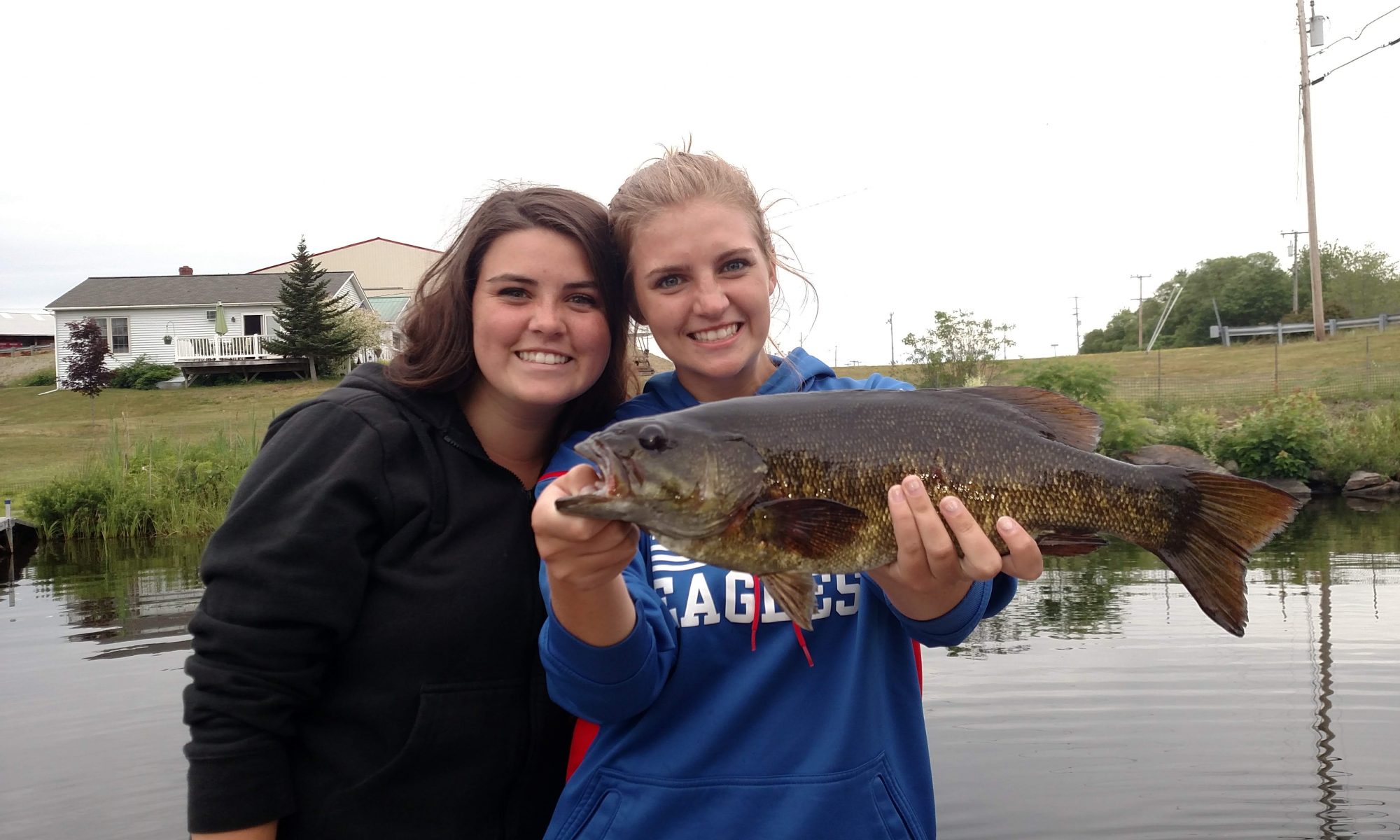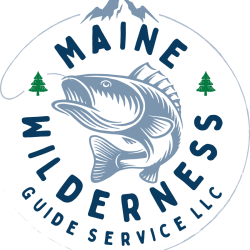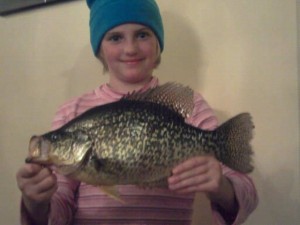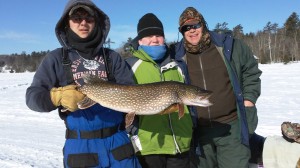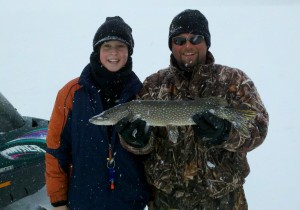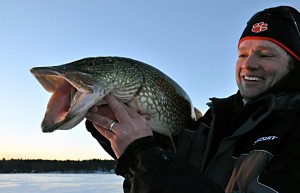The word is exotic. It beckons to an era of English explorers and porters. Stanley and Livingstone. Hemingway’s treks and his close brushes with death. Big tents with dinners served on fine china and wines poured into crystal.
Safari is actually the Swahili word for journey or trip.
However for me it has always meant adventure. Right out of the Saturday afternoon serial movies that we used to watch at my friends house. I think the show was called “Passport To Adventure” and would run fifteen minute segments of feature length movies. Meaning over the course of six or seven weeks we would actually see the entire movie. We would see the jungle adventures of Alan Quatermain, Tarzan, or even Charlie Allnut (Bogart) piloting the African Queen down the Ulanga River.
My recent trip to Tanzania fulfilled a life long dream of visiting the Dark Continent and going on safari. However I wasn’t visiting the jungles brought to life by Edgar Rice Burroughs, but the Serengeti. Or as the local Maasi call it, the endless plains.
After months of planning with Thomson Safaris, my wife, Carolyn and I made the long journey to Tanzania that included an eight-hour flight from Boston to Amsterdam, and then a ten-hour flight into Kilimanjaro Airport, the major airport serving eastern Tanzania. We still had yet another one-hour hop on a small bush plane to take us to the northeastern tip of the Serengeti. However we were in Africa!
Arrival and the Adventure Begins
Fortunately I had built into our trip a two-day layover in Amsterdam and a full day at a game lodge resort near Arusha before we actually began the safari. This was a wise move as we were well rested before arriving at the small Arusha airport for our trip north and gave us an opportunity to visit Arusha National Park. It also pretty much guaranteed that we would have our bags when the safari began. Lost bags are a common problem on these multiple interconnecting trans-oceanic and trans-continental flights.
Our pilot at Arusha was Captain Jack, complete with pony-tail and earrings and looked like a pirate that had lost his ship on a reef and now was ferrying tourists to lion country. He introduced himself as Captain Jack and of course we responded with a hearty “Hi Jack”. Something probably not best said on board an aircraft but we all laughed at his feigned expression of disgust. Muttering something about American tourists and the need to stay on schedule he fired up the engine of his Cessna.
Our flight took us northwest from Arusha over farm and pasture land, across the Great Rift Valley and over the eastern edge of Serengeti National Park. The vistas were amazing and the excitement in the aircraft and its passengers was building. The flight also included a dramatic fly over of an active volcano although much to the disappointment of some, there was no lava spewing out. Not even some dust or smoke. Bummer.
Upon arrival in Loliondo, we loaded our gear into the waiting Discovery Land Rovers. We had three vehicles at our disposal along with driver-guides and a head Guide – Willie Hombo, who we had met that morning in Arusha. He was very knowledgeable of the local flora and fauna and had a dry sense of humor. In fact he is the longest serving employee of Thomson in Tanzania. He seemed like a mix of Richard Pryor and Marlin Perkins. He would be our inspirational leader for the next couple of weeks. While all this was going on local Maasi, who were herding cattle and goats and taking items to a local market, were closely observing us. Are those really spears they are carrying?
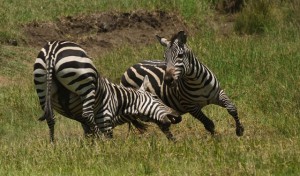 We were still two days away from the Serengeti but our adventure had begun. We wound our way towards our tent camp spotting giraffes, zebras, and various antelope species along the way. Our driver, Rick, was very informative and eagerly supplied us with the names of the birds, trees, and animals we observed. Some of us were already leafing through our journals to record the animals and birds we were encountering. I, like a few others was busy snapping pictures not realizing that in the days to come I would see tens of thousands of animals. That however is the beauty of digital cameras and large memory disks.
We were still two days away from the Serengeti but our adventure had begun. We wound our way towards our tent camp spotting giraffes, zebras, and various antelope species along the way. Our driver, Rick, was very informative and eagerly supplied us with the names of the birds, trees, and animals we observed. Some of us were already leafing through our journals to record the animals and birds we were encountering. I, like a few others was busy snapping pictures not realizing that in the days to come I would see tens of thousands of animals. That however is the beauty of digital cameras and large memory disks.
After about two hours of bumping along the unpaved roads that I would come to get used to, we crested a hill and could see our tent camp ahead of us. A welcoming committee of camp staff was awaiting us with hot towels to wipe away the dust and papaya juice to slack our thirst. As we met the staff, a ritual that would be repeated at each camp-site, we were assigned our tents. Carolyn and I drew Tent # 1 and soon our bags were being delivered to our Nyumba, the Swahili word for tent.
By my conservative thinking I have probably spent about a year in tents of one size or another in all forms of weather and seasons. However I have never encountered a tent quite like the one I was entering in the Loliondo Game Reserve.
This tent measured at least twelve feet by twelve. In the main room was a room double bed with side tables that held solar powered lamps. There were two overhead solar lights as well. In the adjacent room was a wash up area with two sinks and plenty of water and biodegradable soap. On the other side of the wash-up area, were two smaller rooms; one with a shower, and the other with a chemical toilet. The hot water for the shower was delivered shortly after check-in and could be ordered whenever needed. However, knowing the shortage of water in the area and suddenly being more environmentally aware, we would be careful not to waste such a precious resource. This wash-up and bathroom area also had solar lighting. The power for this was supplied by a battery inside the tent connected to an array of collectors on the back of the tent. All very impressive, and self-sustaining.
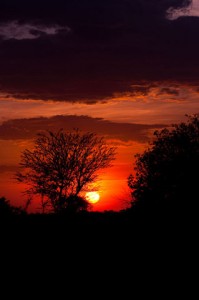 A much-appreciated cooked lunch was served, and then we headed out on a nature walk that included the sighting of zebras, gazelles, and giraffes. We also came across a bat eared fox and saw numerous birds including ostrich and secretary birds. The giraffes were the highlight and much storage capacity on the disks was being utilized as we took pictures from multiple angles and different zooms. Willie acting as our nature guide pointed out unique flora as we wound our way towards a hill that would serve as a viewing point for our first sunset.
A much-appreciated cooked lunch was served, and then we headed out on a nature walk that included the sighting of zebras, gazelles, and giraffes. We also came across a bat eared fox and saw numerous birds including ostrich and secretary birds. The giraffes were the highlight and much storage capacity on the disks was being utilized as we took pictures from multiple angles and different zooms. Willie acting as our nature guide pointed out unique flora as we wound our way towards a hill that would serve as a viewing point for our first sunset.
Our nature walk was also an opportunity to get better acquainted with our fellow trekkers. There were eleven of us in total from varying backgrounds. We were all from the U.S.A. and so there was that common bond but we seemed as a group to connect right away. There were no egos. Everyone had left those at home but all brought a great sense of adventure and a willingness to try something new. I knew that this group would be special and I knew it would be tough to say our goodbyes in a few weeks.
After about a three-hour hike we found ourselves atop a rocky area where our land Rovers had magically appeared along with cold beverages and snacks. It was a great way to end the day with a cold Kilimanjaro beer and a beautiful sunset. However the day wasn’t over. We still had a scrumptious meal awaiting us back at camp and a fire for conversation and story telling afterwards.
The next morning, a beautiful sunrise, song- birds, a freshly delivered jug of hot water for washing and a cheerful Jumbo from our staff ushered our first full day on safari in! Coffee, tea, and biscuits followed this. We were off early to see wild life and would return for a hearty breakfast in a couple of hours.
Our morning hike took us across an open plain where we once again saw numerous examples of the local plant and animal life and then on into an area that contained more trees including acacia and palm trees. We met some local Maasi children on their way to school and we learned a few new words of greeting. Just as we were beginning to tire we came upon a remote camp site complete with a toilet and a large picnic table set for the eleven of us. We were served a full “English style” breakfast, which we heartily gobbled up. At about this point in time I realized that we would probably pack on a few extra pounds on this trip. The days of our hiking would be over once we got into the national parks where you were not allowed to exit your vehicle.
After a late morning rest and light lunch we headed back out to a local Maasi Village, or Boma, for a visit. Emanuel, a Maasi warrior, who spoke excellent English and had a great sense of humor, had briefed us on the dos and don’ts. I think he thoroughly enjoyed watching the look on our faces when he mentioned that his dad had many wives and that he had numerous brothers and sisters. Maasi wealth is determined by the number of cattle you own and his dad had one of the larger herds in the area. Cattle are used to purchase wives and so the more cattle; the more wives.
The Maasi Boma is a circular area that comprises mud huts and an area for cattle and goats. The circle is built from thorn bushes and has the added attraction of guard dogs. Both used as a defense or early warning system against local predators such as lion, leopard, and hyena. The Boma is the center of life for the Maasi and at evening’s end the young boys who have been looking after the stock for the day, herd the animals into the pens, milk the animals as needed and eventually retire to their huts. These huts are small in size and are constructed from mud and dung. It was at best a culture shock for us. I personally could not comprehend the lack of clean water, ventilation inside the huts, or the fact that we were walking on layer upon layer of cow manure.
Despite their setting the Maasi seemed happy and enjoyed our visit. There seems to be strong family ties and a sense of community that many of us find in short supply back home. However it would take a long time to get the interior of that hut out of my mind.
Another beautiful sunset and scrumptious meal and tomorrow we will be heading south-west into the Serengeti.
The Serengeti
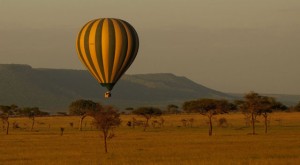 The Serengeti National Park was first established in 1951 and comprises over 9,000 square miles. It is a UNESCO world heritage site and considered one of the great destinations of the world. Most of it is grasslands but there are river valleys, some hills, and Kopki (pronounced copy) that seem to rise out of the African floor and serve as lookouts for lions and other animals. If you have ever seen the Disney movie “The Lion King” it is what is known as Pride Rock.
The Serengeti National Park was first established in 1951 and comprises over 9,000 square miles. It is a UNESCO world heritage site and considered one of the great destinations of the world. Most of it is grasslands but there are river valleys, some hills, and Kopki (pronounced copy) that seem to rise out of the African floor and serve as lookouts for lions and other animals. If you have ever seen the Disney movie “The Lion King” it is what is known as Pride Rock.
After breakfast and goodbyes to our hosts at Camp we set out in our Land Rovers for the park. Along the way we stopped for some shopping at a local Maasi “collaborative” and I got to discreetly visit a school where I met the Headmaster and presented some school supplies that Carolyn had purchased before leaving the States.
We continued our drive by many farming villages and more than once our journey was slowed due to grazing cattle that decided the grass was better on the other side of the road. Many times we were confronted by friendly smiles, hellos, and waves from the local Tanzanians who seemed happy to have an eclectic group of tourists driving along their roads. We returned smiles and waves and eventually found ourselves at the main east entrance to the Park.
A light picnic lunch at the Park Entrance and we were on our way. We encountered our first wildebeest and learned that the Great Migration was in full swing, but that the animals were not as far south due to the drought that was affecting the region. This was bad news for the herd of two million plus animals but would be good news for us as the viewing possibilities were very good.
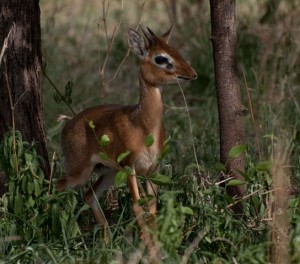 Along the route we were ever watchful for the big cats but alas never spotted any. We did see a troop of baboons, Dik Dik, more zebra and giraffe, tons of gazelles – both Thomson’s and Grant’s, Impala, and a wide assortment of birds. I had never thought the Serengeti would be so full of song birds. The songs and colors were a constant reminder that Africa not only has the most abundant and diverse collection of mammals on the planet but bird life as well.
Along the route we were ever watchful for the big cats but alas never spotted any. We did see a troop of baboons, Dik Dik, more zebra and giraffe, tons of gazelles – both Thomson’s and Grant’s, Impala, and a wide assortment of birds. I had never thought the Serengeti would be so full of song birds. The songs and colors were a constant reminder that Africa not only has the most abundant and diverse collection of mammals on the planet but bird life as well.
Despite the visual and audible sensory bombardment it was the olfactory overload of my senses that I will never forget on that day. It was our first encounter with a hippo pool. Now, being in the seafood business for over twenty-five years I have smelled some pretty disgusting things but none have come close to the smell of a hippo pool. It was however just another part of the wonderful adventure we were on.
As we arrived at our second Nyumba, inside the Serengeti, the size and facilities of this, a more permanent camp, which Thomson had established a few years back, overwhelmed us. The main tent included a large lounge area that reminded me of a scene out of “Mogambo”, starring Clark Gable. Words and even pictures, cannot adequately describe this setting and the sense of where I was at that moment. Pictures do show you a two dimensional representation of the place but cannot convey the spiritual joy of being in a place where you had always wanted to be and now realized you were.
 As we took stock that evening of what we had seen there were obvious animals we had all come to see and yet had not seen. A sort of “bucket-list” was developed. This of course included the big cats, elephants, and rhinos. I knew it would just be a matter of time and location and I knew this was like the buildup to a great climax where the good stuff always comes near the end. However I really wanted to see a cheetah in the wild.
As we took stock that evening of what we had seen there were obvious animals we had all come to see and yet had not seen. A sort of “bucket-list” was developed. This of course included the big cats, elephants, and rhinos. I knew it would just be a matter of time and location and I knew this was like the buildup to a great climax where the good stuff always comes near the end. However I really wanted to see a cheetah in the wild.
As we headed out on our fourth day of safari the anticipation of seeing the Great Migration was front and center for all of us. The added bonus today would be the viewing of lions which we knew would be in the area of the wildebeest and zebras. This was calving season and that meant an abundance of predators would be all around the migration. We didn’t have long to wait.
Our first hint of something really special was when one of my new friends spotted a seemingly endless line on the horizon that was somehow moving. The binoculars revealed a procession of wildebeest that stretched for miles in both directions. On either side there were smaller in size, but still very large groups of zebra. All of these animals headed in the same direction – to the next water hole. Zebra and wildebeest must drink everyday during the migration. Years of evolutionary genetics have instilled within lions and hyenas the knowledge that this is so and consequently, of the nearly 400,000 baby wildebeest that will be born in the next month, over 150,000 will fall prey to the iron jaws of the lionesses who have waited all year for the migration to pass within the territory of their Pride. No sooner had we seen the dust clouds kicked up by the sea of herbivores then we spotted the opportunistic carnivores in close proximity.
The big cats are the star attraction of any safari. As wondrous as it is to see tens of thousands of migrating animals, or a giant hippo pool, or even a herd of elephants, nothing will gather a traffic jam of Land Rovers faster than a pride of lions, or a solitary cheetah, or a leopard sleeping in a tree. As soon as one guide spots a cat, the word goes out, and pretty soon it’s like a traffic jam on Broadway. Rovers are jockeying for the best camera angle and one wonders how there isn’t a major pile up of vehicles and tourists.
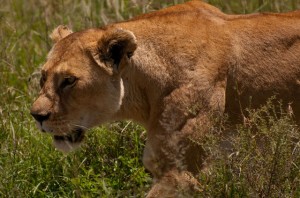 Our first glimpse of cats involved three lionesses strolling out from tall grasses in plain view of nervous zebras and wildebeest. The lions acted very coy and appeared to pay the jittery animals no attention. The cats know that there is a never ending supply of dinner for the next few weeks and will spend the minimal amount of effort to secure a meal. Not much different from a house cat.
Our first glimpse of cats involved three lionesses strolling out from tall grasses in plain view of nervous zebras and wildebeest. The lions acted very coy and appeared to pay the jittery animals no attention. The cats know that there is a never ending supply of dinner for the next few weeks and will spend the minimal amount of effort to secure a meal. Not much different from a house cat.
I shot picture after picture from the advantage point of the pop-up roof in the Land Rover. Finally, Willie asked me to put down the camera for a few minutes. “There will be plenty of opportunities to take pictures. Just for a moment take it all in and wonder at the majesty of what is going on around you” I complied and for the next hour or so, just gazed out on the scene that was unfolding in front of me.
The largest migration of mammals, anywhere on earth!
The largest migration of mammals, in the history of the planet!
Right in front of my eyes!
How could we possibly top this? How could this safari possible get better? Well the next day would start with an early morning balloon ride over the Serengeti and our first sighting of a cheetah.
After a 4:00am wakeup call we were on the road to our ballooning adventure. A quick survey indicated that none of us had ever ballooned before so we would all be rookie passengers. There was no outwardly sign of nervousness but I did reflect on Les Stroud’s episode of “Surviorman” on A&E television, where his balloon crashes in Africa and he stranded for seven days. I didn’t bother to share that thought with the group. I am sure we would be fine.
On our way we spotted wildlife including a hippo returning to a nearby river after a night of grazing.
The launch site for the balloons was a beehive of activity when we arrived just before sunrise. The owner of Serengeti Balloon’s gave us a safety briefing and seat assignments and soon we were in the balloon basket waiting for lift off.
The experience of ballooning across the Serengeti is something I will not soon forget. The initial blast of flames that sends hot air rushing into the balloon is intense and certainly took any chill off the occupants sitting in the basket.
As the balloon lifted into the sky we scramble from our seating positions to start viewing the grasslands that spread out in front of us. We saw numerous zebra, wildebeest, hyenas, foxes, and antelope. We passed over acacia trees. We spotted giant termite hills. Occasional blasts of the flames were the only sounds that broke the silence of the morning. Each of the basket’s passengers strained to spot yet another occupant of the Serengeti below and point it out to fellow observers.
Alas, our captain indicated that the journey would soon end. He advised us to get back in our seating position and prepare for hopefully a soft landing. If only he could avoid the termite mounds.
After a successful landing we were greeted with Champagne and orange juice. Champagne and ballooning go hand in hand as the earliest balloonist apparently had a supply on board so that when they touched down in a farmer’s field the bubbly could be offered as a sign of friendship and peace. I wondered what the folks were doing back home at that moment. A short hike across the Serengeti and we were then treated to additional Champagne and a full English breakfast.
If I die today I will die happy!
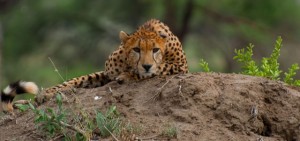 After arriving at our third Nyumba, we were told that two Cheetahs, brothers actually, had been hanging out near camp. As we headed out for a game drive after a quick lunch we hadn’t driven more than a couple of hundred yards when the cats were sighted.
After arriving at our third Nyumba, we were told that two Cheetahs, brothers actually, had been hanging out near camp. As we headed out for a game drive after a quick lunch we hadn’t driven more than a couple of hundred yards when the cats were sighted.
All of my life I have loved Cheetahs. Their design alone is testimony to the evolution of an animal built strictly for speed in the Africa plains. The tail, as long as the body, is used as like rudder on a clipper ship to help balance the cat as it reaches speeds of seventy miles per hour and cuts quickly lefty of right in pursuit of prey. The claws, which are un-retractable, act like cleats that a top sprinter uses to accelerate out of the blocks. Even the black stripes down the sides of its eyes are designed to prevent glare from the hot African sun. The Cheetah only hunts during daylight hours and so all of these design features are to help ensure success. Even so, the cat only is successful one in five times and with encroachment of man and reduced habitat the Cheetah has not fared as well as the lion and leopard and its days maybe truly numbered.
We shot picture after picture as the two cats worked their way towards a large acacia tree that offered some shade from the blistering afternoon sun. The temperature was well above ninety Fahrenheit and the longer we stopped the more Tsetse flies that gathered so we eventually headed on towards our goal of finding large herds of elephants.
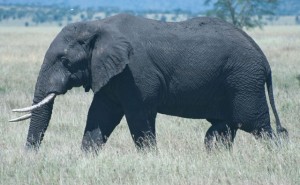 Not only were we to find elephants but more cats. In fact we found leopards.
Not only were we to find elephants but more cats. In fact we found leopards.
The leopard we found was sleeping in a tree. We knew this because there were a dozen or so Land Rovers parked adjacent to the tree and we could see the tail of the leopard dangling down from the branch where she was sleeping. As we were snapping picture after picture we saw the cat get up and look hard in the direction of a river bed. There were several elephants leaving the watering hole and heading straight towards the tree where the leopard had been napping.
I would have thought that the leopard would have climbed to a higher branch or simply left the area to find a new spot. This was not the case because the leopard had a couple of cubs in the tree with her. One was relatively young, while the second looked to about a year old. An anxious mother with eyes alternately on the elephants and her cubs seemed really upset when the two juveniles decided to bail from the tree at the last moment and run for another tree. Mother was stuck in the tree with four big tuskers directly beneath her. This African soap opera was a delight to watch and suddenly as if on cue one of my safari mates pulled out a box of Pringles Chips secured at the last park entrance gift shop and we enjoyed the simple delight of Pringles and water and the greatest show on earth in stunning 3D and surround sound without the need for bulky glasses or headphones.
On our journey back to the Nyumba we crossed paths with more elephants. In fact at one time we were forced to park the Rover while a herd of these giants casually crossed the road. One was nearly touching the Rover as we all sat quietly and marveled at the size and gracefulness of such an animal.
Ngorongoro Conservation Area and Crater
Our trip out of the Serengeti was pure misery. It was hot and with all the dust we had to leave the windows closed and the roof shut. Four two hours we endured the long dusty drive through the southern Serengeti towards the Ngorongoro Conservation Area and the Crater, and our eventual resting place for the evening; Gibbs Farm.
We stopped at the south entrance to the Serengeti to bid it adieu and to stock up on some Coke and Pringles and then we were on our way again.
We did take time to make a stop at the Oldupai Gorge, the site of where the Leakey’s found the earliest traces of man back in the 60’s and 70’s. It was very interesting but the heat was overtaking us and we soon pushed on to the lush hills that engulfed Gibbs Farm.
If you have an opportunity to visit the Ngorongoro Crater, opt for overnights at nearby Gibbs Farm. Although our safari company offered a nearby Nyumba it was time after six nights for a bit of luxury. Gibbs provided it, in spades.
Carolyn and I were assigned the Shamba Cottage. Shamba, Swahili for farm offered a very large space complete with an indoor and outdoor shower, an outside observation deck, a fireplace, and flush toilets. After six nights of chemical toilets and camp showers it felt great to take a long hot shower and a wondrously slow shave knowing there was plenty of water and the water being used was cleverly recycled into the farm’s irrigation system. Later we all met for cocktails before a wonderful buffet dinner and sinful dessert.
After dinner we returned to our cottage where a fire had been laid on and the mosquito netting set up for a relaxing and deep sleep. I am not leaving this place…ever…I thought as I drifted off to sleep.
The energetic group that we are, we assembled at 6:00am the next morning for an early departure to the Crater to beat the heat and see if we could spot rhinos and cats. I am amazed that our group was such a cohesive unit and we seemed to agree on just about everything. Here were six different groups of travelers all willing to drag themselves out of the most comfortable accommodations in Tanzania to be bounced across rough roads in unbearable hot and dry conditions to view wildlife. We were forgoing a wonderful breakfast of omelets served on a patio with locally roasted coffee beans in favor of a boxed breakfast that included no pastries or fresh orange juice. We were passing up fine English teas in favor of bottled water. We must have been crazy or heat stroked. What could possibly drive eleven well-educated rational professionals to make such a choice?
The Ngorongoro Crater is a unique and separate eco-system within the heart of Tanzania. The climate is nearly the same all year round, is home to Africa’s big five (lion, leopard, elephant, rhino, and buffalo) as well as cheetahs, hippos, wildebeest, zebra, hartebeest, gazelle etc. It is one hundred square miles and if you have two days to spend in Tanzania this is the place to be.
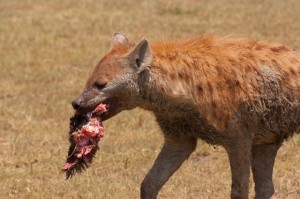 So in return for passing up on the delights of extra sleep and a phenomenal meal what did we receive in exchange? We witnessed the birth of a wildebeest. We saw the aftermath of the death of a baby wildebeest by a pack of hyenas. We saw our first rhinoceros, with her baby! We saw a pride of lions complete with males eating a zebra. We even glimpsed a leopard. Add to that the multitude of elephants and buffalo and we saw the “Big Five” on the same day. So, we all agreed it was a fair trade. Besides we also knew that we would be returning to our cottages for one last night before moving on to our last Nyumba in Tarangire Park tomorrow.
So in return for passing up on the delights of extra sleep and a phenomenal meal what did we receive in exchange? We witnessed the birth of a wildebeest. We saw the aftermath of the death of a baby wildebeest by a pack of hyenas. We saw our first rhinoceros, with her baby! We saw a pride of lions complete with males eating a zebra. We even glimpsed a leopard. Add to that the multitude of elephants and buffalo and we saw the “Big Five” on the same day. So, we all agreed it was a fair trade. Besides we also knew that we would be returning to our cottages for one last night before moving on to our last Nyumba in Tarangire Park tomorrow.
After dinner I sipped on a Kilimanjaro beer and realized that we had somehow passed the mid-way point in this trip and the thought that we had fewer days ahead than we had already notched, made me sad that this trip had to end. I was determined to get the most out of the next three days before I had to leave for reality and civilization. I thought about the word civilization and laughed to myself at the absurdity of how we live our lives with such abundance and waste and complain about petty problems. Here in Africa the simple pleasure of turning on a tap and getting clean drinking water is an extreme luxury. Average incomes are measured in the hundreds of dollars per year and after witnessing school children doing math problems in the sand with sticks as a writing utensils I became angry at the pettiness of our problems.
Our final day at Gibbs involved a tour of the grounds and a visit to a nearby school. The thirst for education is strong in Tanzania and it is great to see the children in the schools eagerly spending time on their work.
Tarangire National Park
After a nice lunch we were on the road again towards Tarangire National Park. Although we were driving south, away from the equator it was actually getting hotter and drier. This is after all the summer, if such a season exists three degrees latitude south of the equator.
We did a bit of a game drive but mercifully we arrived at our Nyumba for the evening and many of us headed straight for the dining tent after a cooling towel from the camp staff was offered and accepted. A round of beers were ordered up and we slowly tried to drive the dust and thirst of the past four hours into submission. After the beer I headed for my tent which was right underneath a thousand year old baobab tree for a hot shower.
That night I felt the onset of an upset stomach and quickly took the medications that my Doctor had suggested that we bring with us. I slept fine but knew that tomorrow would be a low food intake day.
On next to last full day and we were up early. I passed on breakfast with my irritable stomach and opted only for some soothing tea. Once in the Land Rover I was feeling pretty good but man it was hot. At the rest stop at lunch we found out that the temperature was 110F. That’s about as hot as you ever want it to be. Fortunately there was little humidity so it wasn’t completely unbearable. I was drinking plenty of water but even that wasn’t slacking the ever-present thirst. I would have given a weeks salary for a tall Diet Coke and ice at that moment.
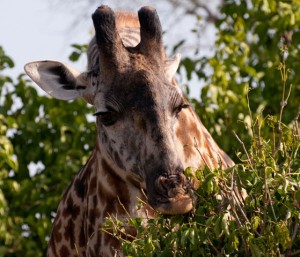 The day was filled with lots of sightings of elephants, giraffe, and monkeys. However the highlight was a cheetah that was trying to hunt an impala. She made her way directly past our Rover and then jumped up on a large termite hill and after stretching and grooming, gazed right into my eyes. I think I took about a hundred pictures. Eventually she tired of her exhibitionism and disappeared into the long grasses near us. Those of us in the Rover just looked at each other speechless at what we had just witnessed and decided to call it a day on this high note. Besides there was cold beer back at the camp!
The day was filled with lots of sightings of elephants, giraffe, and monkeys. However the highlight was a cheetah that was trying to hunt an impala. She made her way directly past our Rover and then jumped up on a large termite hill and after stretching and grooming, gazed right into my eyes. I think I took about a hundred pictures. Eventually she tired of her exhibitionism and disappeared into the long grasses near us. Those of us in the Rover just looked at each other speechless at what we had just witnessed and decided to call it a day on this high note. Besides there was cold beer back at the camp!
Our final full day, and for many a day of travel dawned, and I think we were all a little melancholy. As a group we had quickly bonded and become great travel companions over the past ten or so days. Now we knew that in a few hours we would be hugging, exchanging emails with promises to keep in touch, and then we would probably disappear from each other’s lives forever. Carolyn and I and one other would be spending tonight in Arusha but the other eight would be headed for the airport and the beginning of the long journey home. One group was extending their safari and heading to Rwanda to see gorillas. I was jealous.
Heading Home and Goodbyes
We did a short game drive and soon found ourselves at a Culture Heritage Center near Arusha where we did some shopping. Our farewell lunch followed and then as expected the sad goodbyes and hugs all around. I couldn’t accept that this trip was ending and lingered as long as possible before climbing aboard the Rover and being driven to our lodge for our last night in Africa.
Carolyn and I enjoyed a quiet last dinner in Tanzania. Our hosts at the lodge had remembered us from the nearly two weeks prior on our first night in Africa. Twenty-four hours later we would find ourselves at the beginning of the grueling thirty-two hour journey home filled with great memories and shopping bags full of Tanzanian crafts.
Post Script
A week has now passed since my return to reality.
In that time I have relived much of my adventure by pouring over the thousands of photos Carolyn and I took. I have been sending out the better ones to friends and preparing a slide show of our trip. Eventually I will put together a “coffee-table” book to present to family and close friends. I have stayed in touch with our fellow safari friends via email but the reality is we are all getting on with our daily routines again.
I believe Carolyn and I will return to Africa, and maybe Tanzania. The spectacle of the migration and fellowship shown to us by Tanzanians will not be something we will ever forget. As the old saying goes the worst bug to get bit by in Africa is the travel bug. I have been bitten hard and I am not sure there is a cure on this side of the Atlantic.
A final thanks to Willie in Tanzania, and Eliza in America. You both made this trip, the trip of a lifetime and one that we will cherish forever.
Also thanks to Kim and Doug, Joan and Wayne, Bill and Stacie, Jay and Cindi, and Pam for being great pals for ten days in Africa.
Asante
Darrell Pardy
